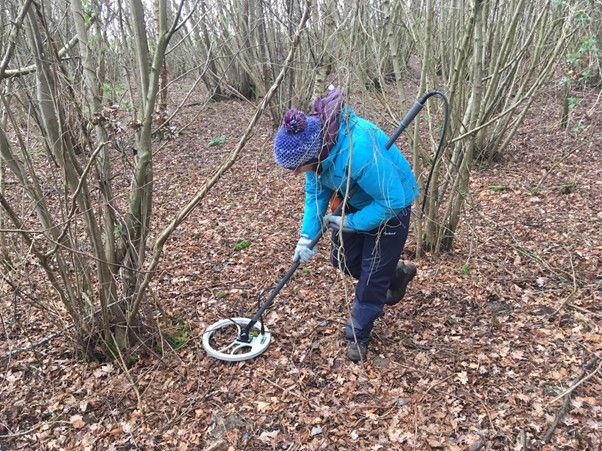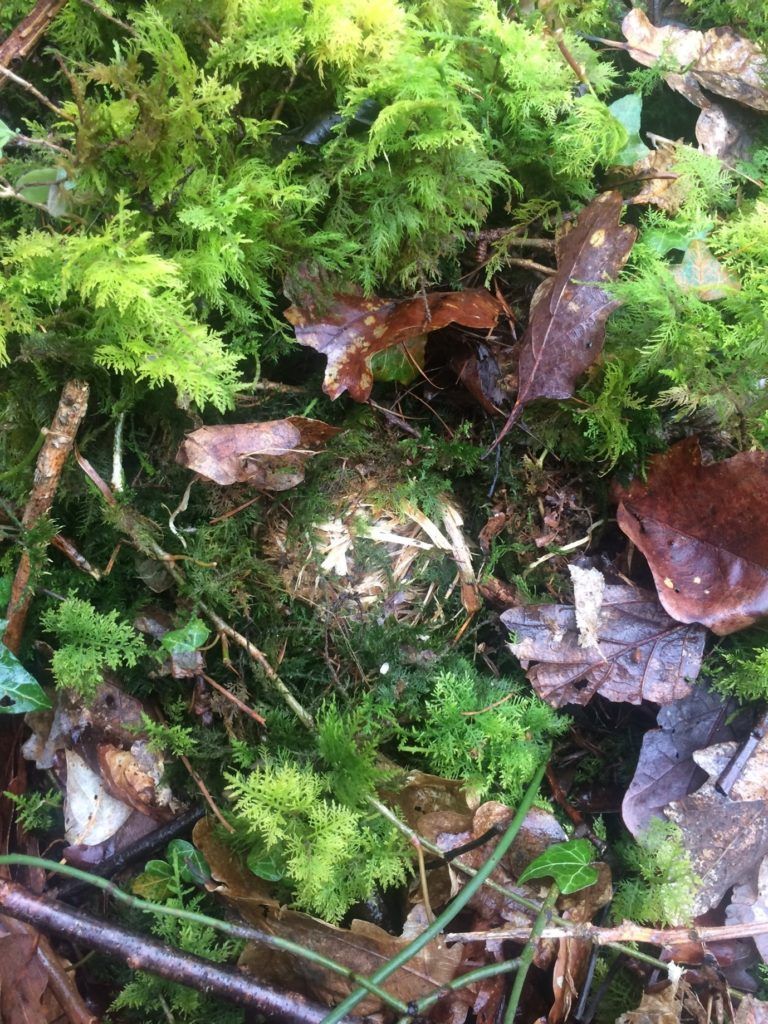You might stumble upon a slightly frazzled looking person in a tatty woolly hat and a big purple jacket held together in places by duct tape. She may well be muttering to herself as she walks, very slowly, up and down between two lines of tape. At first glance, she appears to be metal-detecting – indeed, at second glance this may still appear the case. This person is University of Cumbria PhD student Rachel Findlay-Robinson, and she is on the look-out for hibernating dormice.
“It’s quite repetitive work, but it is totally worth it when you hear that elusive ‘beep!’ that indicates that the PIT-tag reader (the gadget resembling a metal-detector) has detected a chip. It always makes my heart jump a little!”
Detecting hibernating dormice
As part of her PTES-funded PhD research into dormouse hibernation patterns, Rachel is using a powerful PIT-tag detector to systematically search for hibernating dormice in woodlands where they are routinely microchipped as part of the National Dormouse Monitoring Programme (NDMP). “The monitors at both of my research sites have very kindly provided me with data on where they find and chip the most dormice during the active season, so I concentrate my search in those areas. I use flagging tape to mark out search areas, and always have the scanner in front of me so that I know I won’t accidentally step on a hibernation nest”. Once she finds a nest, Rachel sets up two trail cameras to watch for when the dormouse comes out of the nest, and also puts out dataloggers to measure temperature and humidity around the area where the nest is.
Using the microchip number, she can also find out about the dormouse that she has found without disturbing it. “Some of the “nests” have been quite unexpected” she says. “Nothing like inside a bird feeder or a brick, as seen in the news, but I found one little guy hibernating under the leaf litter without a nest at all! When I came back in the summer he was gone, so hopefully that means he survived the winter. There have been others in nests under the leaf litter in the middle of the forest floor – in fact, I have hardly found any in the “traditional” places such as in root stocks! I’ve also found microchips of (presumably) dead animals – the chip reader will detect them on the forest floor, and often I can quickly establish that there is no nest or animal there. When I send these chip numbers to the monitors, they usually belong to animals that haven’t been seen for quite a long time, adding to the likelihood that they have died”.
Detecting in lockdown
“Unfortunately, COVID has disrupted my work quite a bit – I live in Cumbria, so have been unable to travel to my research sites in south-east England and north Wales as often as I planned, but I have still been able to collect some data. COVID also meant that I wasn’t able to have research assistants, unlike for the fieldwork pre-COVID (thanks to Gary and Ellen!), making the work a bit harder physically, and the chances of me going crazy from spending five days alone in the woods slightly higher! Audiobooks have helped quite a lot, as have evening phone calls to make sure I’ve spoken to someone that day.”
Rachel hopes the data she collects will help us understand if there are any links between microclimatic weather patterns (i.e. temperature and humidity on the forest floor level, as opposed to higher up) and how often dormice come out of their hibernation nests, and when they finish hibernating in the spring. “I’ve also had the chance to look at a number of hibernation nests in detail – obviously when the dormice have left them in the summer – and they are really beautiful. Dormice are such interesting little creatures, I really hope that my research will help us to understand them better, and hopefully help protect them against climate change”.
Written by Rachel Findlay-Robinson.
Rachel is at the University of Cumbria and is supervised by Drs. Davina Hill, Volker Deecke and Andrew Weatherall. Her fieldwork is funded by PTES, and is carried out in collaboration with Suffolk Wildlife Trust and Natural Resources Wales.
Find out how we’re working to protect the hazel dormouse and what you can do to help:


